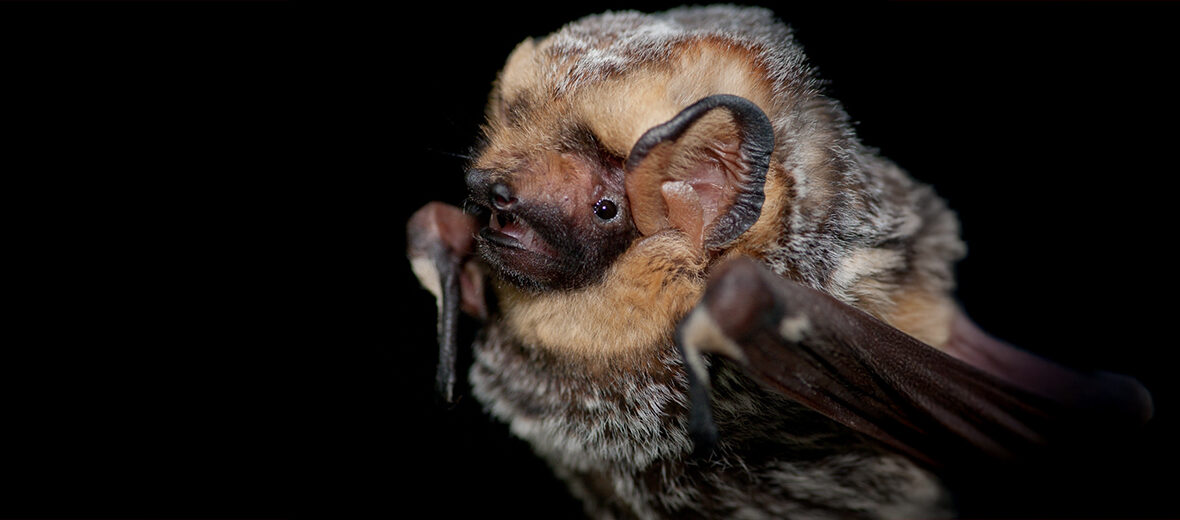
The hoary bat can be found from Canada, to the United States, throughout Mexico, into Central America, and down throughout much of South America. They prefer coniferous forests and woodlands and hunt over lakes, slow moving rivers, streams, and open areas. These bats are the most widespread of all New World (North and South America) bats. Due to their numbers and widespread distribution, these little critters are listed as Least Concern by the IUCN. Their primary threats are habitat destruction and human interference.
First the Stats…
Scientific name: Lasiurus cinereus
Weight: Up to .9 ounce
Length: Up to 3 inches
Wingspan: Up to 15 inches
Lifespan: Up to 14 years
Now on to the Facts!
1.) These bats are usually solitary and roost alone in trees and the foliage of large shrubs.
2.) Like all insectivorous (eat insects) bats, hoary bats help keep pesky insects at bay by consuming copious amounts each night.
3.) Hoary bats are migratory and spend their winters in South America, Central America, Mexico, and the southern parts of North America. Their summers are spent in North America and Canada.
4.) Some populations are known to hibernate during the winter and not migrate at all.
5.) A group of bats is called a colony or cloud.
But wait, there’s more on the hoary bat!
6.) Feeding primarily on moths, these critters also prey on mosquitoes, beetles, flies, wasps, bees, dragonflies, grasshoppers, and termites.
7.) Like most other bats, these bats are nocturnal (active at night).
Did you know…?
While foraging for food, these bats can cover a whopping 24 miles a night.
8.) Females undergo up to a 40 day gestation (pregnancy) that yields up to 2 pups.
9.) Pups spend up to 1 month with mom before dispersing to start their own life.
10.) Hoary bats have among the highest reported prevalence of rabies in North America.
But wait, there’s still more on the hoary bat!
11.) Various birds and snakes prey on hoary bats.
12.) These bats can fly up to 21 mph.
13.) Like some other bats they are sexually dimorphic in that females are about 20% larger than males.
14.) Hoary bats don’t seem affected at all by the dreaded white-nose syndrome (WNS). This disease is thought to have killed millions of bats in eastern North America since around 2006 and typically kills up to 100% of bats in a colony during hibernation.
Now a Short Hoary Bat Video!
Be sure to share & comment below! Also, check out the Critter Science YouTube channel. Videos added regularly!

Want to suggest a critter for me to write about? Let me know here.
Some source material acquired from: Wikipedia & IUCN
Photo credit: Daniel Neal



